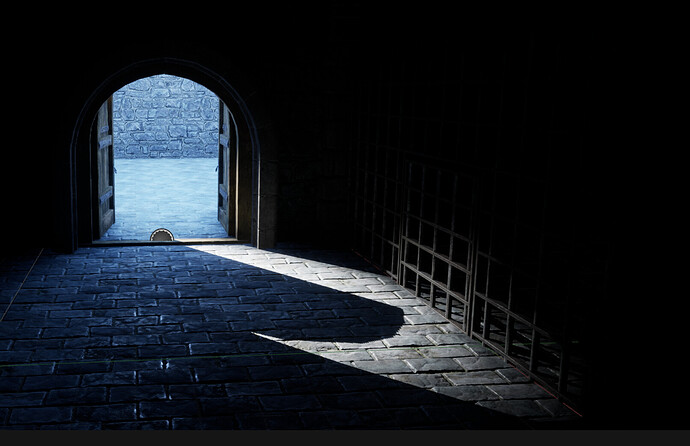I gave this a lot of thought and I’m not entirely confident that adding a directional light is worth the amount of work involved to repair its damages. As per Unreal’s documentation, The Directional Light simulates light that is being emitted from a source that is infinitely far away (a lot like a sun). But what are we trying to do in this map? Trying to create a dark, possibly undergound crypt with a entrance that appears to be outside (even though it’s just a closed in area). Essentially we just need the courtyard lit like it has sun (5% of the map) and the rest of the map to not be touched by the sun (95% of the map). So if I add in a directional light, now 100% of the map is covered by the sun’s light and there’s endless bleeding over 95% of the map where there shouldn’t be light. So now you have to cover this area with either box brushes (like the demonstration used), planes (that was previously used in an Unreal Environment Design course), or a ceiling of static meshes (like he’s doing in this video). But why? Who’s going to see it? The player cannot leave the crypt or fly over it.
I’m not sure if there’s a better way to cover sunlight over a small portion of the map but I feel a directional light is just too far reaching. It’s great for outdoor maps but inside, not so much. Maybe use Spotlights to give that light shining into the crypt look?
So I just removed my directional light from the map and now I don’t have to cover the ceilings because it’s the perfect darkness I need to continue.

